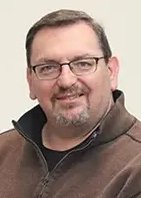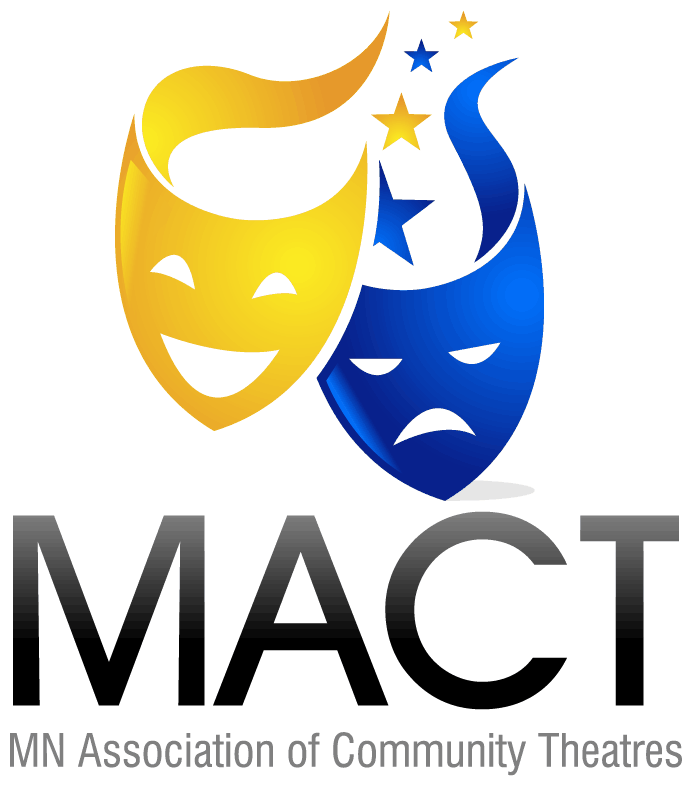Guest Article by John Deyo, Riverland College Theatre Technical Director

As the Production Designer for the shows at Riverland, I am challenged with the task of deciding what the world of the play looks and sounds like. This is done through scenic, lighting, sound and video design.
When we decided that we were going to be producing “Carrie: The Musical,” I was very excited because of the numerous technical challenges that come with a show like this. Some shows are very straight forward in their design requirements, while others require a more nuanced, well-thought-out design. This is one of those shows.
My process involves reading the script one time through in order to get the story. Then I read it again through the lens of the designer, keeping track of staging requirements and all of the various locations that we have to represent. Some shows all take place in a single location, think of comedies such as “The Odd Couple” or “On Golden Pond.” In these cases, I design a single unit set (called a box set) that never changes and we can spend a lot of time crafting a real-looking, lived-in environment. Other shows require that we go to multiple locations, some more fanciful that others. For shows like this, we create lots of set pieces on wheels that roll in for all the various scenes. In some larger theatres, they have what is called a “fly system”, which means they have a very high ceiling over the stage and many backdrops and set pieces can be “flown” up into the area over the stage, then, using a system of ropes and weights, these pieces can be dropped down onto the stage when they are needed. This can make for very complex, quick scene changes. The Frank W. Bridges Theatre doesn’t have a fly system, so we are more limited in the set pieces we can create, which means we have to be very creative in our use of space.
Carrie: The Musical is told as a flashback…the audience, from the very beginning, knows what is to come at the end. To that end, we set the show in the gymnasium where Carrie’s prom night takes place, but AFTER she has destroyed everything. So the main portion of our set is designed to look like a gym that has been badly burned. We do travel to other locations, such as Carrie’s home, but these other locations are portrayed in a more theatrical, imaginative way…not quite as literal as the gym.
I work closely with the director of a show to get his/her vision for the show. More often that not, I find that we are on the same page from very early on in the process. But throughout, it remains a collaboration with the entire creative team. I need to work with the Musical Director to know where they would like the orchestra and how big the orchestra will be. This plays an important part in designing a set for a musical. I also work with the costumer in considering color palettes and seasonal attributes. I also have to make sure that our choreographer has the stage space and levels to create the movement and dance necessary to help tell the story.
I start with some simple pencil sketches and take those to the creative team. We all work together to make what modification to the design might be necessary, then I create more finalized colored drawings. These become my blueprint for building. As I am the designer and the builder, I don’t need to get overly complicated with my drawings. When I design for someone else to build, then I need to flush out full-fledged architectural plans.
The process of building the set for a show usually takes around 4 or 5 weeks. This is when my carpentry skills have to kick in. I start by adding our standard pieces to the stage. We keep an inventory of standard sizes of platforms and flats (walls). I like to think of these as my giant LEGO set. Every good LEGO set has the basics, the standard pieces…but then your Mom and Dad got you that Star Wars set and it came with all these strange pieces that only work for that set. Those are the “custom” pieces that we don’t keep in inventory. Again, we have to be very practical when it comes to storage space.
So, once I have added the standard pieces, it’s time to add the custom elements. This can mean anything from custom framing a wall, to building doors from scratch to fit a particular design need. This show, in particular, has a set of steel gym doors at the rear center of the stage. They look just like steel gym doors, but were created completely with lightweight lumber and plastic. It is that process of creating something out of something else that is a big part of the magic. A while back I was searching for just the right piece to fit onto a huge bank safe. I was looking for the dial at the center. After much searching, the prefect shape appeared in the form of the dish of Kwik Trip Macaroni and Cheese. Who knew?

In Stephen King’s novel, our protagonist develops “telekinesis,” the ability to move objects with her mind. That means that I have to come up with all kinds of tricks to make things appear as if Carrie is manipulating them with her mind. Some are low-tech, like fishing line…others require complex video projection and sound effects. And then there is the blood. Lots of blood. As of this writing, the 5-gallon bucket of fake blood is sitting in my office unopened. It represents one of those many exciting challenges I was mentioning earlier. You will have to come see the show to see how we put all these elements into place to create a world worthy of its Halloween weekend timeframe.
Editor’s note: John Deyo is the Technical Director for the Riverland College theatre program. He designs and builds all of the sets for all of Riverland’s theatre productions. He also does all of the lighting, sound and video design. Finally, he manages all of the other events that take place in the theatre, such as Faculty Days and Nurse Pinning ceremonies.
John was born and raised in Austin, went to Austin High School and Riverland Community College. He got his BS in Graphic Design from St. Cloud State, with a minor in Theatre. He met his wife, Lisa while in a play and in the Briar’s at Riverland. They have been married for nearly 40 years and have 4 grown children. Lisa Deyo owns and operates Sweet Reads Books and Candy in downtown Austin. John Deyo is also the owner of ViDeyo Arts Video Production Studio, which he has run since 1986.
 MACT
MACT